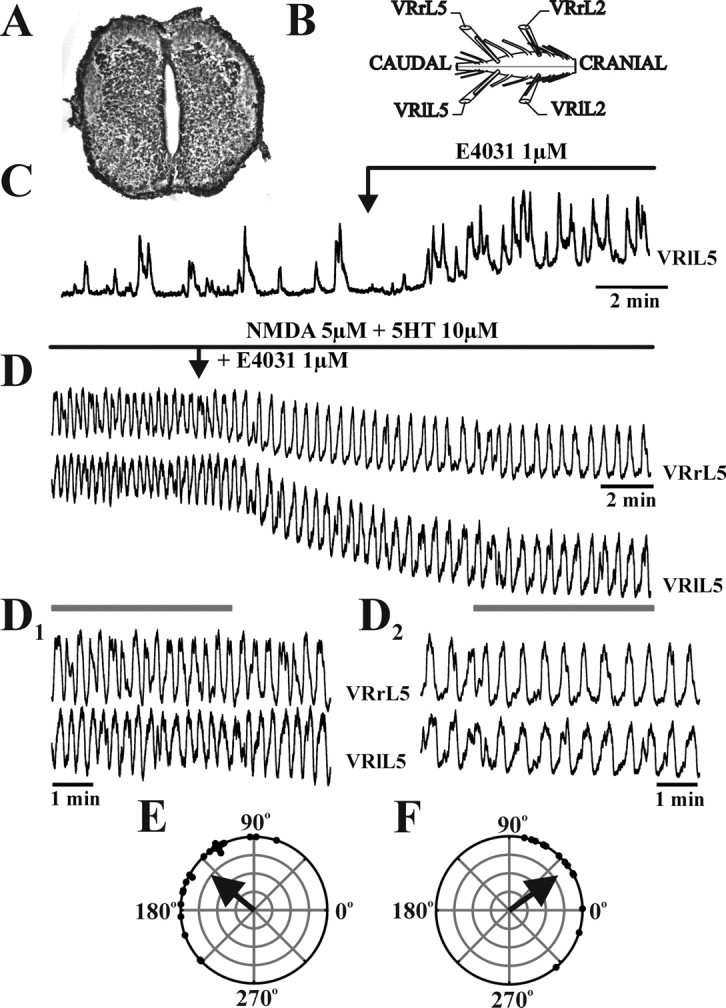Figure 5.

Effects of E4031 on the spinal cord isolated from a 15-d-old mouse embryo. Histological section of E15 mouse lumbar spinal cord (A) and schematic diagram of the experimental setup for VR recordings (B). C, Spontaneous activity recorded from E15 VR in control and after 10 min application of E4031 (1 μm). Note the large increase in spontaneous bursting related to IK(ERG) antagonism. D, D1, Rhythmic oscillations elicited on homosegmental (L5) lumbar roots by bath application of 5 μm NMDA plus 10 μm 5-HT. D2, Subsequent addition of E4031 increased burst period and duration. E, The polar plot, constructed from the activity depicted in D1, shows that oscillations induced by NMDA and 5-HT were not alternated between right and left L5 VRs and were poorly phase coupled. F, When E4031 (1 μm) was added, the polar plot (obtained from tracings in D2) confirms poor coupling between VR discharges, although synchronicity is improved. VRrL5, Right L5 VR; VRlL5, left L5 VR; VRrL2, right L2 VR; VRlL2, left L2 VR.
